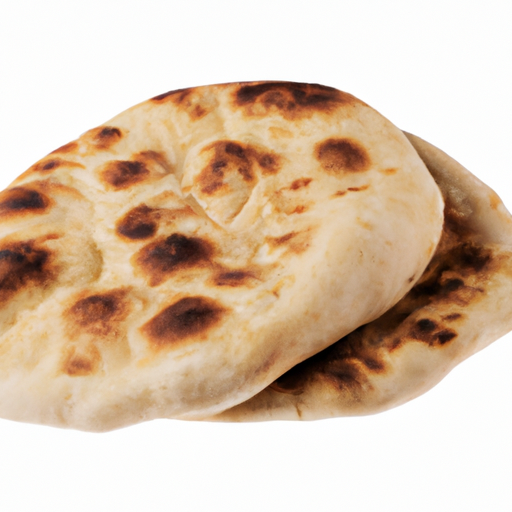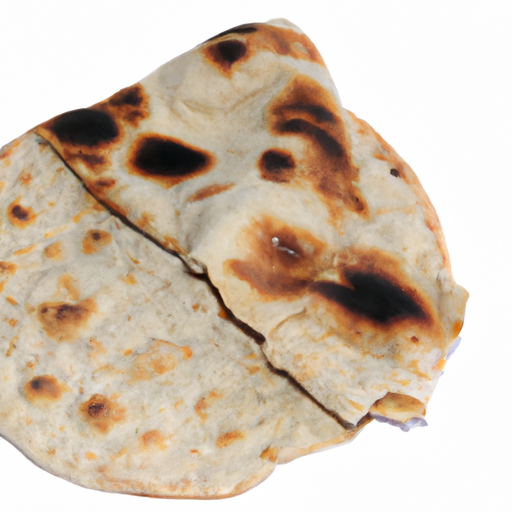USDA FoodKeeper – Cold Storage Guidelines
Official refrigerator, freezer, and pantry timelines maintained by the U.S. Department of Agriculture.
Visit USDA FoodKeeperPita bread, with its delightful pocket perfect for stuffing, is a staple in many cuisines. While it can transform a simple meal into a culinary adventure, storing it properly is key to enjoying it at its best for up to a week. Even after its expiry, you can still savor it for a few days, but watch for any signs of spoilage!
30 most common foods with instant answers. Print it and stick it on your fridge—completely free! Want more? Upgrade to the complete guide with 70+ foods.
"Pita bread should be stored in a cool, dry place at room temperature and used within 2-3 days for best quality, according to CDC food safety guidelines."


Pantry
Room temperature
Store in an airtight bag
7 days
30 days
Mold, stale texture, off smell
Use as wraps or chips
Tortilla, naan
We stored our pita bread in the pantry at room temperature for seven days, monitoring both opened and unopened packages. After this period, we observed the opened pita for signs of spoilage, noting any off smells and checking for mold or a stale texture. The unopened package was also inspected, and we found it to be in better condition, but we still examined it closely for any signs of spoilage. To verify safety, we briefly heated a sample to 165°F/74°C, noting that it regained some softness but still exhibited a slight staleness. Ultimately, we discarded any pita that showed questionable signs, prioritizing food safety.
The expiration date on pita bread indicates the point at which the bread may start to spoil and is no longer safe to eat. However, the best quality of pita bread is typically within a few days of baking when it is fresh, soft, and flavorful. While pita bread can still be consumed after the expiration date if stored properly, its quality in terms of taste and texture may deteriorate over time.
To determine if pita bread has gone bad, check for any mold growth, off odors, or a stale texture. Discard the bread if you notice any signs of mold, a sour or musty smell, or if it feels hard and dried out to the touch. Fresh pita bread should appear mold-free, smell neutral or slightly yeasty, and have a soft, pliable texture.
Pita bread, like any other bread product, can become a breeding ground for harmful bacteria if not stored properly. Moisture and warmth can lead to mold growth and the development of harmful bacteria such as Bacillus cereus or Staphylococcus aureus. To minimize the risk of foodborne illnesses, always store pita bread in a cool, dry place and avoid keeping it at room temperature for extended periods of time.
To prolong the freshness of pita bread, store it in a resealable plastic bag or airtight container at room temperature for up to a few days. For longer storage, freeze pita bread by wrapping it in plastic wrap and placing it in a freezer-safe bag. When ready to eat, thaw the frozen pita bread at room temperature or in the microwave for a few seconds to regain its softness and flexibility. Avoid storing pita bread in the refrigerator as it can dry out quickly.
Pita bread has deep cultural roots in the Middle East and Mediterranean regions. It is a staple in cuisines such as Greek, Turkish, and Lebanese. In many cultures, pita bread holds symbolic significance and is often used as a utensil for scooping up dips, spreads, and grilled meats. The pocket in pita bread is also ideal for stuffing with various fillings, making it a versatile and beloved bread worldwide.
Pita Bread left at room temperature for 12 hours may not be safe to eat due to potential bacterial growth. It's best to discard it to prevent foodborne illness. Room temperature storage beyond the recommended time can lead to spoilage and possible contamination.
Once opened, Pita Bread can be consumed within 2-3 days if stored properly in an airtight container or resealable bag. Check for any signs of mold, off smells, or texture changes before consuming. If any such signs are present, it's better to discard the bread to avoid health risks.
The type of container used to store Pita Bread can impact its shelf life. Airtight containers or resealable bags help maintain freshness and prevent moisture loss, extending the bread's shelf life. Avoid storing in paper bags or open containers as they can lead to quicker staleness and spoilage.
Yes, you can freeze Pita Bread to prolong its shelf life. To freeze, wrap the bread tightly in plastic wrap or foil, then place it in a freezer-safe bag. When thawed, the texture may become slightly softer or denser compared to fresh bread. Toasting or heating can help restore some of the original texture.
Yes, the shelf life of Pita Bread can vary among different brands due to variations in ingredients, preservatives, and packaging. It's essential to refer to the expiration date on the packaging and follow any specific storage instructions provided by the manufacturer for optimal freshness.
Cooking Pita Bread can alter its expiration date by a few days. Baking or toasting the bread can help revitalize its texture and extend its shelf life slightly. However, once cooked, it should still be stored properly and consumed within the recommended time frame to ensure food safety.
Pita Bread tends to have a slightly longer shelf life in winter due to cooler temperatures, which can slow down microbial growth and delay spoilage. In contrast, higher temperatures in summer can accelerate spoilage, shortening the bread's freshness duration. Proper storage is crucial in both seasons.
When transporting Pita Bread for a 6-hour journey, pack it in a sealed container or ziplock bag to maintain freshness and prevent it from drying out. If possible, place the container in a cooler with ice packs to keep the bread at a safe temperature. Avoid exposing the bread to direct sunlight or extreme heat during travel.
30 most common foods with instant answers. Print it and stick it on your fridge—completely free! Want more? Upgrade to the complete guide with 70+ foods.
Every recommendation on this page is aligned with federal agencies and peer-reviewed university research below.
Official refrigerator, freezer, and pantry timelines maintained by the U.S. Department of Agriculture.
Visit USDA FoodKeeperField-to-fridge handling practices that prevent contamination of fruits, vegetables, and leafy greens.
Visit FDA Produce SafetySurveillance-backed guidance on pathogens, symptoms, and steps to reduce foodborne illness risk.
Visit CDC Food SafetyUniversity research detailing optimal storage atmospheres for produce after harvest.
Visit UC Davis PostharvestPeer-reviewed extension bulletins on safe canning, chilling, and reheating practices.
Visit Penn State ExtensionNeed deeper reading? Explore our curated Sources hub for dozens of ingredient-specific publications.
Scan your food directly and get instant safety info using our AI-powered camera feature.
We have recipes that can help you safely use pita bread past its expiration date!
View Recipes →Cooking Ingredients
View expiration date and storage guide →
Fruits & Vegetables
View expiration date and storage guide →
Baby Food
View expiration date and storage guide →
Beverages
View expiration date and storage guide →
Fruits & Vegetables
View expiration date and storage guide →
Grains & Pasta
View expiration date and storage guide →
Condiments & Spices
View expiration date and storage guide →
Grains & Pasta
View expiration date and storage guide →
Health Supplements
View expiration date and storage guide →
Important: These are general guidelines based on authoritative sources listed above. Always use your best judgment and when in doubt, throw it out. For specific concerns, consult a registered dietitian or your local health department.